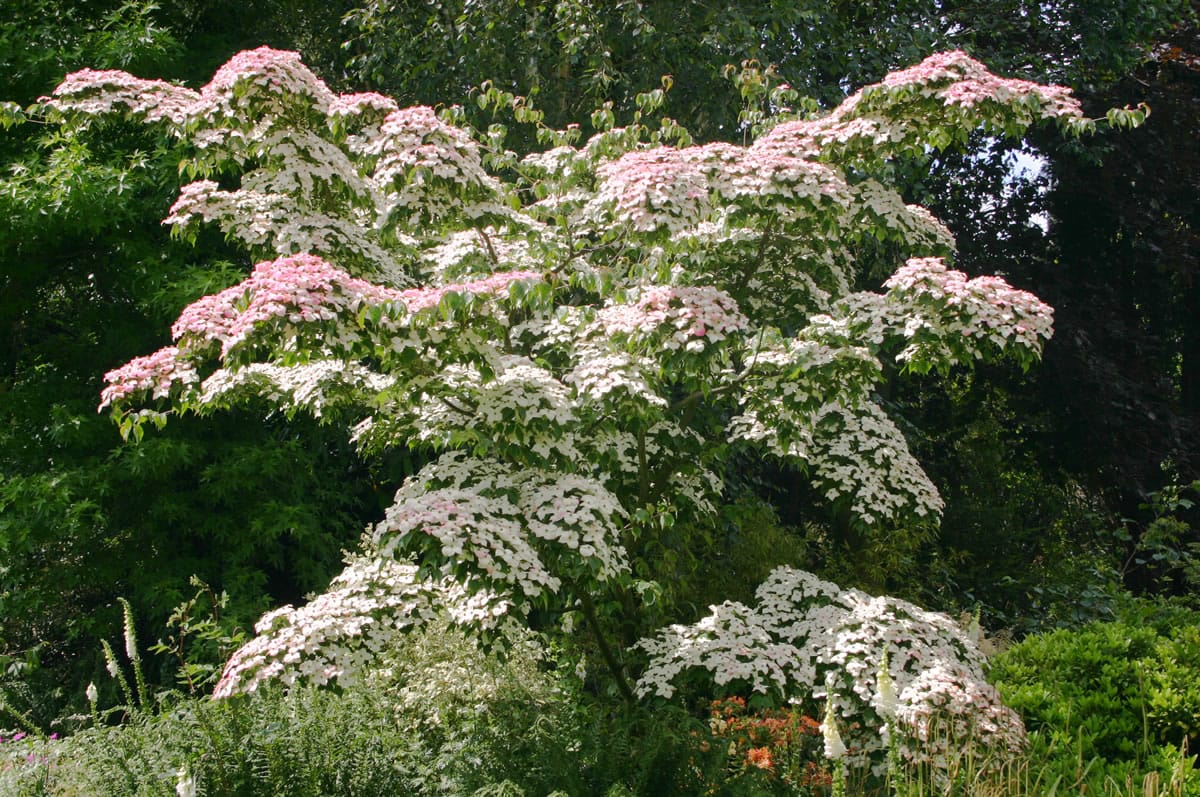The first rule of pruning is to plant the correct plant in the correct place. Do not attempt to keep a tree or shrub a different size than it was meant to be. If you’re moving into an established garden, wait a year or two to prune. I prefer to tackle one type of pruning job at a time than spend all day pruning many different types of plants. Take one or two days to trim Japanese maples in summer. Focus on deciduous shrubs another day and evergreens another.
As in most garden chores, I recommend taking an uncomplicated approach to pruning. Try to keep in mind the natural shape of a plant. Don’t place a shrub with a full, fountain shape along a sidewalk where you want a neatly trimmed hedge. Take the time to choose the right plant or your sense of aesthetics will be challenged by the plant’s natural tendencies. If you ultimately want a little round ball, buy boxwood, which can thrive despite repeated pruning.
If you want a shrub to flourish, give its distinct silhouette the chance to fill out completely before pruning. Spend the extra effort choosing the correct plant to eliminate extra pruning jobs from your garden list. Ask yourself what you like about the shape of the plant you are buying. Check out a book on shrubs or go online
to see what your plant will look like when it matures. If you still need to trim the plant, follow its natural lead.
Pruning for special effect is an artistic undertaking with rewarding results. Pruning can enhance flower or fruit production. Cutting spent flowers from perennials can encourage a second flush of bloom. You can prune to control the time of bloom, as in pinching back chrysanthemums until late summer. Experiment with plant sculpture by shaping a hedge or creating an espaliered fruit tree.
o o o
Organic garden mulch helps nourish plants for a final flush of flowers. Mulching helps regulate soil temperature while holding moisture in the soil around plants. If you lost any needy plants through the summer because they needed extra attention during dry spells, replace them in late autumn with drought-tolerant plants. Consider planting Northwest native plants. If you haven’t done so before, take the time late in the season to mulch the rest of the garden.
o o o
Most of us think of roses only as late spring- and summer-flowering plants, but many rose bushes have much to offer in the year-round garden. Before you fill your garden with roses that have nothing but flower power, consider roses that have the additional interest of colored bark, decorative thorns and rose hips in winter.
Huge, deep-red thorns are the primary feature of the Rosa pteracantha plant. This rose is best planted so that the setting sun highlights the thorns from behind. Rosa virginiana gives a wonderful fall foliage display and holds its own in winter with rich, chestnut brown branches. Rosa geranium has plump, showy winter hips and Rosa glauca sports dusty blue foliage all season long.
Do keep in mind that many of the rugosa roses are not suitable for small gardens, despite their strong scent and attractive hips. Most of the species roses grow so rampant, and have such deadly thorns, that they should not be planted in cultivated garden beds. They are best for large properties, especially in a country garden with lots of space to spread.
No matter how hard you fall for a rose’s flower color or scent at the nursery, read the label well before purchasing a plant. If it says the plant has large thorns or grows to 6 to 8 feet tall, believe it. Don’t go into the battle thinking you will control a rose to a different size than it wants to be. There are too many perfect rose choices to choose the wrong plant in a moment of passion. Believe me, the love affair will not last.
o o o
If a plant has performed poorly, try transplanting it to a different location this fall. If it’s still not happy, give it away or send it to the compost pile.
o o o
If you’re planning a new perennial border for next year’s garden, keep future garden maintenance in mind. Before you plant, create a walkway at the back of the border. It will be hidden by your bountiful garden during the growing season but give you access to the garden for all seasonal chores.
Robb Rosser is a WSU-certified master gardener. Reach him at Write2Robb@aol.com.



